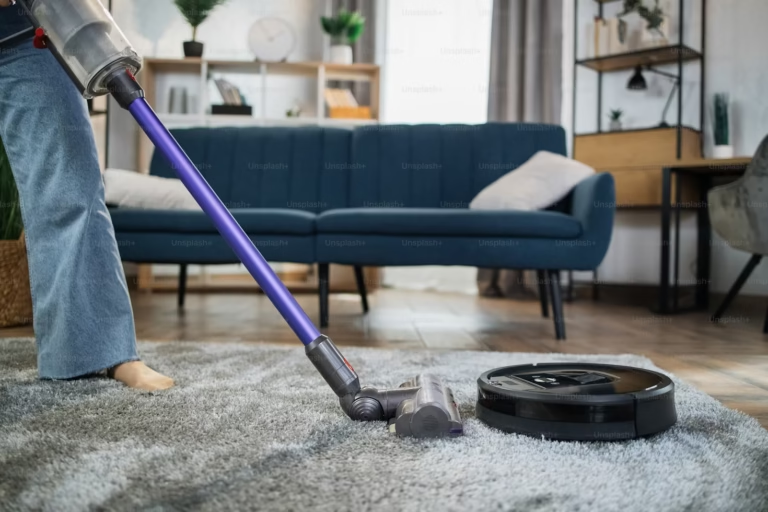A vacuum cleaner is an essential home appliance that keeps your living space clean and dust-free. But like any machine, it requires proper care and regular maintenance to function effectively over the long term. Without regular upkeep, even the best vacuum cleaners can lose suction power, clog up, or stop working entirely.
In this article, we’ll explore the top vacuum cleaner maintenance tips to help your device perform at its best and last for years.
Why Vacuum Cleaner Maintenance Is Important
Regular maintenance doesn’t just keep your vacuum cleaner working efficiently — it also:
- Prolongs the life of the motor and components
- Prevents unpleasant odors
- Ensures better suction and cleaning performance
- Saves money on costly repairs or replacements
- Keeps indoor air cleaner by improving filtration
Spending a few minutes on maintenance each month can prevent bigger problems down the road.
1. Empty the Dustbin or Replace the Bag Regularly
Bagless vacuum:
Empty the dustbin after every use or once it reaches two-thirds full. A full dustbin can restrict airflow, causing a drop in suction.
Bagged vacuum:
Replace the vacuum bag when it’s about 70–80% full. Overfilled bags can cause the vacuum to work harder and reduce efficiency.
🛠 Tip: Always turn off and unplug the vacuum before cleaning or replacing the bag/bin.
2. Clean or Replace Filters
Most vacuums come with one or more filters, including pre-motor, post-motor, and HEPA filters.
- Washable filters should be rinsed under cold water monthly (check the manual for guidance).
- Replaceable filters typically need changing every 3–6 months, depending on usage.
🧼 Pro tip: Let washable filters dry completely (usually 24 hours) before reinstalling to prevent mold or damage.
3. Check and Clear the Brush Roll
The brush roll (or beater bar) collects hair, string, and debris that can get tangled and reduce its effectiveness.
- Inspect it monthly.
- Use scissors or a seam ripper to cut away wrapped hair or threads.
- Remove and clean both ends of the brush roll where dirt often accumulates.
⚙️ Note: Some vacuum models allow you to remove the entire roller for easier cleaning.
4. Inspect and Clean the Hose
A clogged hose can block airflow and reduce suction. To clean it:
- Detach the hose from the vacuum
- Look through it for visible clogs
- Use a broom handle or straightened coat hanger (gently) to remove obstructions
- Wash it with warm, soapy water and let it dry thoroughly
🧩 Reminder: Ensure the hose is completely dry before reconnecting it to avoid mold growth.
5. Examine the Belt
The belt drives the brush roll and can wear out or loosen over time.
- Check for signs of cracking, stretching, or breaking
- Replace the belt every 6–12 months for optimal performance
🧰 Maintenance tip: Always use belts recommended by the manufacturer.
6. Wipe Down the Vacuum Exterior
Dust and dirt can build up on the exterior and attachments. Once a month:
- Use a damp cloth to wipe the vacuum’s body
- Clean attachments like the crevice tool, upholstery brush, and extension wands
- Use compressed air to clean vents or hard-to-reach places
🧽 Why it matters: A clean vacuum is less likely to overheat and performs more efficiently.
7. Store It Properly
After cleaning, store your vacuum:
- In a dry, cool area
- Away from direct sunlight or moisture
- With cords coiled neatly to avoid tangling or fraying
🏠 Bonus tip: Don’t wrap the cord too tightly; it can cause internal wire damage over time.
8. Use It as Intended
Using your vacuum for tasks it wasn’t designed for — like picking up wet spills or sharp objects — can damage its components. Always follow the manufacturer’s instructions and avoid vacuuming:
- Liquids (unless it’s a wet/dry vacuum)
- Fine construction dust (unless specified)
- Large or sharp debris like glass or nails
Check your manual for a list of do’s and don’ts.
FAQs About Vacuum Cleaner Maintenance
Q1. How often should I service my vacuum cleaner?
A: Light servicing (emptying, wiping, filter checks) should be done weekly or monthly. A full inspection or professional service can be done once a year.
Q2. What happens if I don’t clean the vacuum filters?
A: Dirty filters reduce airflow, causing poor suction and potential motor overheating. This can shorten your vacuum’s lifespan.
Q3. How do I know if my vacuum has a clog?
A: Signs include loss of suction, unusual noises, or the vacuum shutting off. Check the hose, brush roll, and air pathways for blockages.
Q4. Can I wash my vacuum’s HEPA filter?
A: Some HEPA filters are washable, while others are not. Always check the user manual before attempting to wash.
Q5. What is the average lifespan of a vacuum cleaner?
A: With proper maintenance, most vacuum cleaners last 6–8 years. Premium models can last even longer.
Conclusion
A vacuum cleaner is a household workhorse — but to keep it running smoothly and efficiently, regular maintenance is key. By following the simple tips above, you’ll not only extend the life of your vacuum cleaner but also ensure it performs at its best for every cleaning session.
Whether you have a bagged upright or a modern cordless stick vacuum, a little care goes a long way. Keep it clean, check the parts regularly, and store it properly — and your vacuum will return the favor by keeping your home spotless for years to come.

